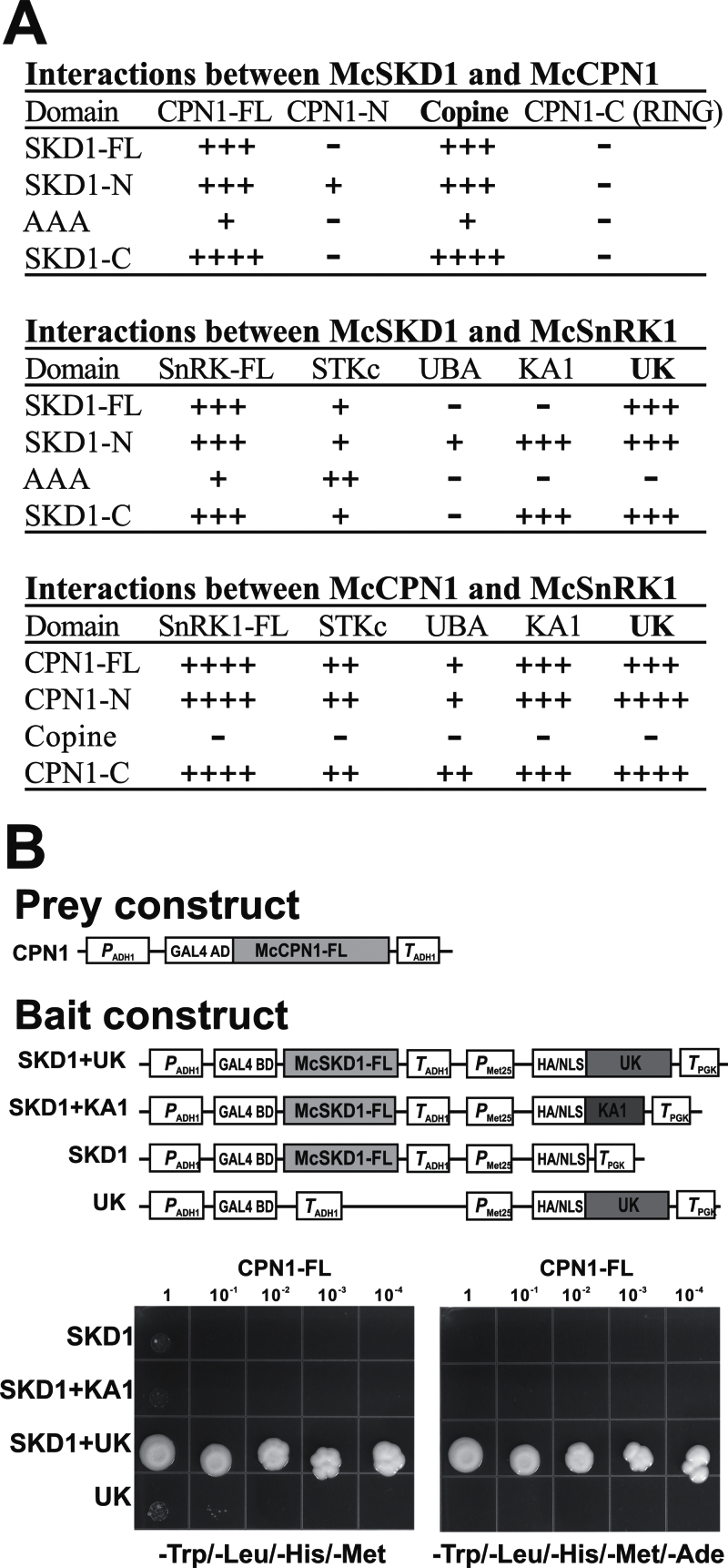Fig. 4.
Identification of the UK region of McSnRK1 is necessary for interaction with McSKD1 and McCPN1. (A) Full-length or domain–domain interactions between McSKD1, McCPN1, and McSnRK1. Results were combined from yeast growth assays and β-galactosidase activity assays shown in Supplementary Fig. S3 at JXB online. –, No interaction (yeast cells grown only on SD-2); +, low degree of interaction (yeast cells grown slowly on SD-3); ++, medium degree of interaction (yeast cells grown on SD-3); +++, high degree of interaction (yeast cells grown on SD-4); ++++, very high degree of interaction (yeast cells grown on SD-4 with β-galactosidase >15 Miller units). (B) Investigation of ternary protein complexes containing McSKD1, McCPN1, and the UK region of McSnRK1 by yeast three-hybrid assay. Schematic representation of the constructs used in the Y3H assay is shown on the top. Grey boxes indicate the sequences cloned into pBridge vector (bait constructs) or pGADT7 vector (prey construct). The growth assay on –Trp/–Leu/–His/–Met medium (left panel) and –Trp/–Leu/–His/–Met/–Ade medium (right panel) is shown on the bottom. Yeast AH109 transformants carrying pBridge-based bait plasmids and pGADT7-based full-length McCPN1 were serially diluted, spotted on selection plates, and incubated at 30 °C for 7 d. Bait plasmids carrying only full-length McSKD1 (SKD1) or a UK region of McSnRK1 (UK) are used as negative controls showing no growth in high stringent medium. Two independent experiments were performed, yielding similar results.

